Timber flooring is a timeless favourite in home design, adored for its understated elegance, durability and convenience.
But when it comes to choosing just the right type of timber for your home, there’s certainly no shortage to pick from. In this guide, we’ll give you an expert run down on each timber variety so you can find the perfect fit for your new home.
Engineered Timber
Engineered timber floors are made up of multiple layers of varying materials, with a timber topping. Unlike solid timber floors, the bulk of the structure is replaced with a more affordable plywood or pine.
A unique benefit of engineered timber is the ability to utilise wider planks, which gives the illusion of a more spacious, open plan home. More of the timbers natural texture can be exposed across the broad planks, which offers a strikingly authentic design touch.
Engineered timber is quick and easy to install which can be a saving grace come build time.
Just bear in mind that engineered timber doesn’t have the same durability of its solid counterpart. However, if you’re on a budget, it’s a more cost friendly alternative with similar – if not better – aesthetic value.
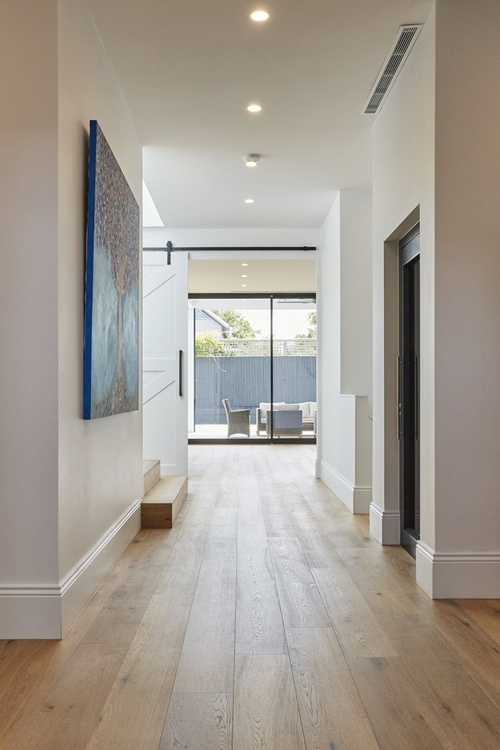
Source: Engineered Timber Floors by Woodcut
Solid Timber
The enduring champion of timber flooring, solid timber is unrivalled for its longevity. Unlike engineered timber, solid timber floors are constructed with slabs of genuine, solid timber. This is then sanded and sealed with a protective coat.
The benefit of solid timber floors is that they look incredible, and will continue to do so for decades. This durability comes from their ability to be sanded back and re-coated more often than other varieties.
The downside is that solid timber is more expensive than the engineered alternative, due to the reliance on large quantities of quality timber.
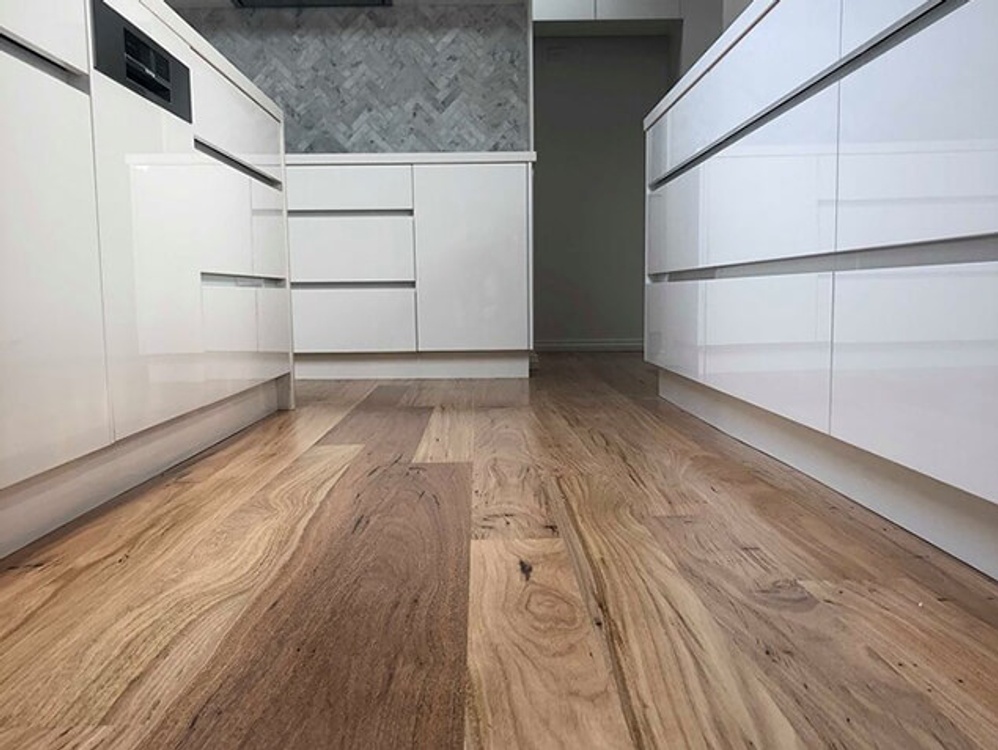
Source: Solid timber flooring - Silvertop Stringy from Nationwide Timber
Laminate
Laminate timber flooring is often hailed as the cost-friendly solution to achieving the timber aesthetic. It’s made from several layers of thinly cut wood pressed together at high temperatures, with an artificial image of timber pressed atop.
It can be anywhere from a half to a fifth of the price of solid timber flooring, which is great value considering its resemblance to genuine timber is often uncanny.
It’s also highly durable, scratch resistant, and a breeze to clean – you can simply glide a cloth right over its surface.
Laminate flooring is, however, susceptible to moisture, so it’s not ideal for bathrooms.
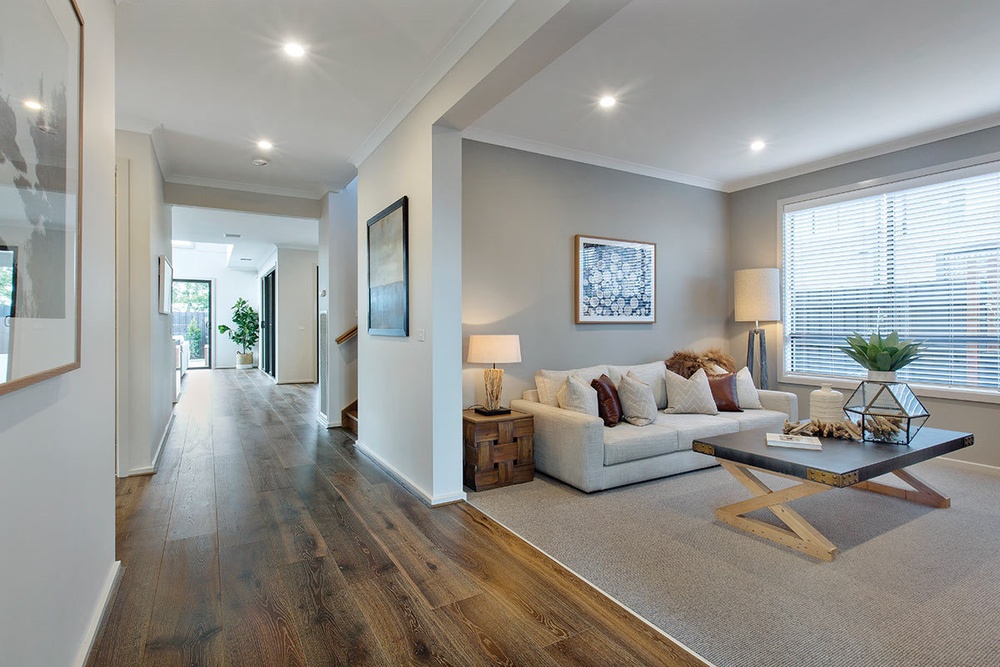
Source: Laminate Timber Floors in Sherridon Homes display home
Vinyl
Vinyl flooring is very comparable to laminate in most aspects – it’s cheap, it strongly resembles genuine timber, and it’s made up from numerous layers.
The key difference is that vinyl is made entirely from plastic – predominantly fibreglass and PVC. This is a major win if you’re looking for a cost-effective way to incorporate a timber look into your bathrooms, as it is highly water resistant.
But this slightly softer make up does mean it can be susceptible to tearing from pet claws or furniture scrapes.
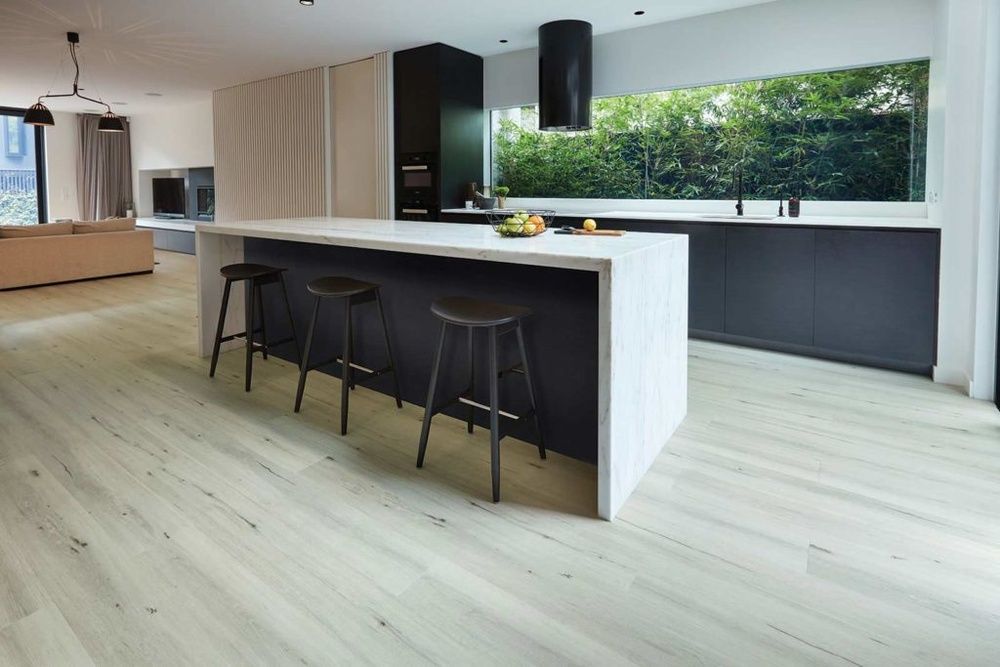
Source: Luxury Vinyl Plank Heartridge floors by Dunlop
Hybrid
We like to think of hybrid flooring as the amalgamation of each flooring type’s best feature. It has the undeniable beauty of genuine timber, fused with the water resistance of vinyl and durability of laminate.
Hybrid flooring sits smack back in the pricing spectrum for flooring options – cheaper than genuine timber but more expensive than vinyl and laminate.
It comes in a vast array of collects and styles, making it one of the most versatile timber flooring options on the market.
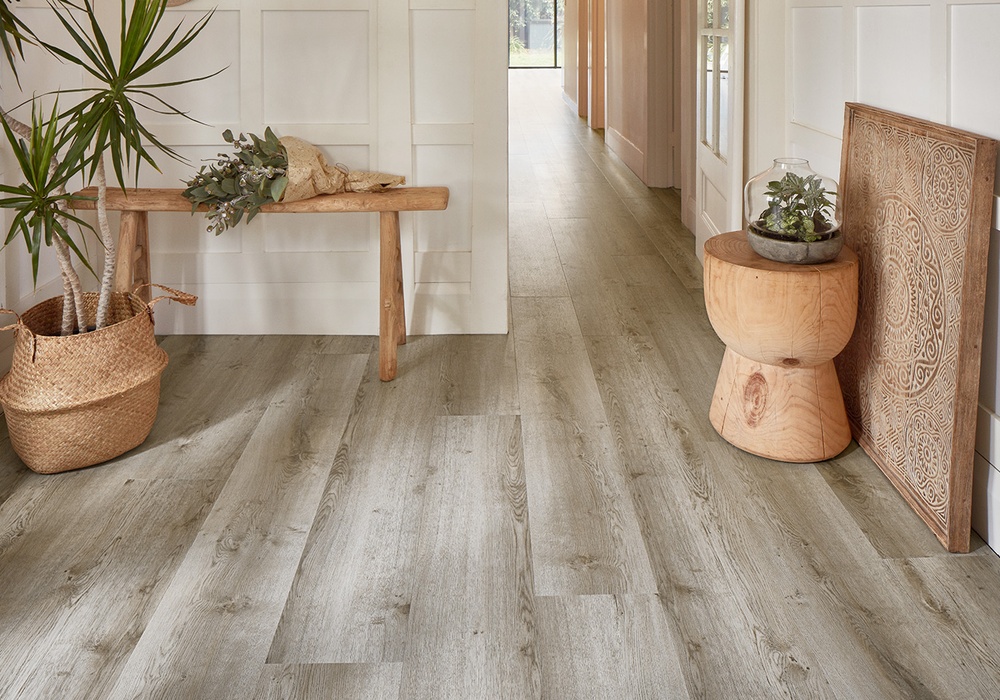
Source: Hybrid flooring from Godfrey Hirst